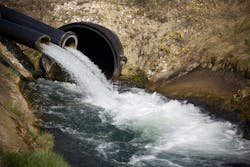EPA issues draft guidance for new NPDES requirements
The U.S. Environmental Protection Agency (EPA) recently announced draft guidance that clarifies how the Supreme Court’s County of Maui v. Hawaii Wildlife Fund decision should be applied under the Clean Water Act National Pollutant Discharge Elimination System (NPDES) permit program. This guidance will help clarify when a NPDES permit is necessary under the Clean Water Act.
“EPA’s guidance will address several questions that the regulated community and others have raised since the Supreme Court issued its decision earlier this year,” said EPA Assistant Administrator for Water David Ross. “NPDES permits are essential tools that help protect our nation’s water resources. Understanding when such permits are needed is critical to the efficient administration of our Clean Water Act permitting programs.”
In its decision, the Supreme Court held that a NPDES permit is required for a discharge of pollutants from a point source that reaches “waters of the United States” after traveling through groundwater if that discharge is the “functional equivalent of a direct discharge from the point source into navigable waters.” The Maui decision also outlines seven non-exclusive factors that the regulated community and permitting authorities should consider when evaluating such a discharge from a point source, depending on the circumstances.
EPA’s draft guidance places the ‘functional equivalent’ analysis into context within the agency’s NPDES permit program. The draft reiterates the threshold conditions for triggering the requirement for a NPDES permit — an actual discharge of pollutants from a point source to a water of the United States. The guidance also proposes that the design and performance of the system or facility from which the pollutant is released is an additional factor that should be considered. When finalized, this action will provide guidance to assist the regulated community and permit authorities with incorporating the Supreme Court’s direction in Maui into existing Clean Water Act NPDES permit programs and authorized state programs.
This draft guidance will be available for public comment for 30 days following publication in the Federal Register.
For more information visit https://www.epa.gov/npdes/releases-point-source-groundwater.
